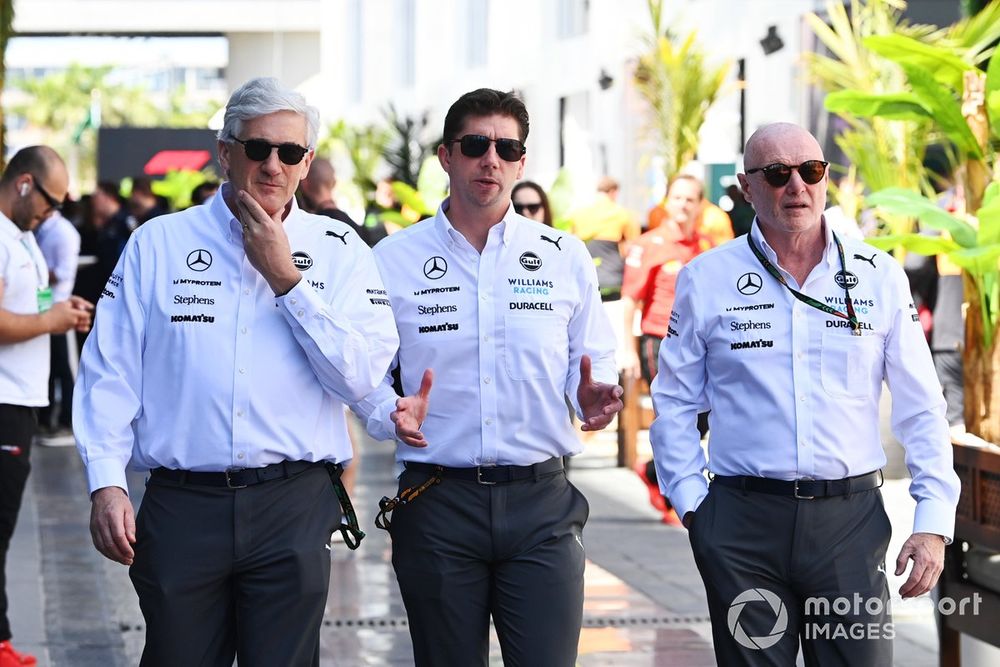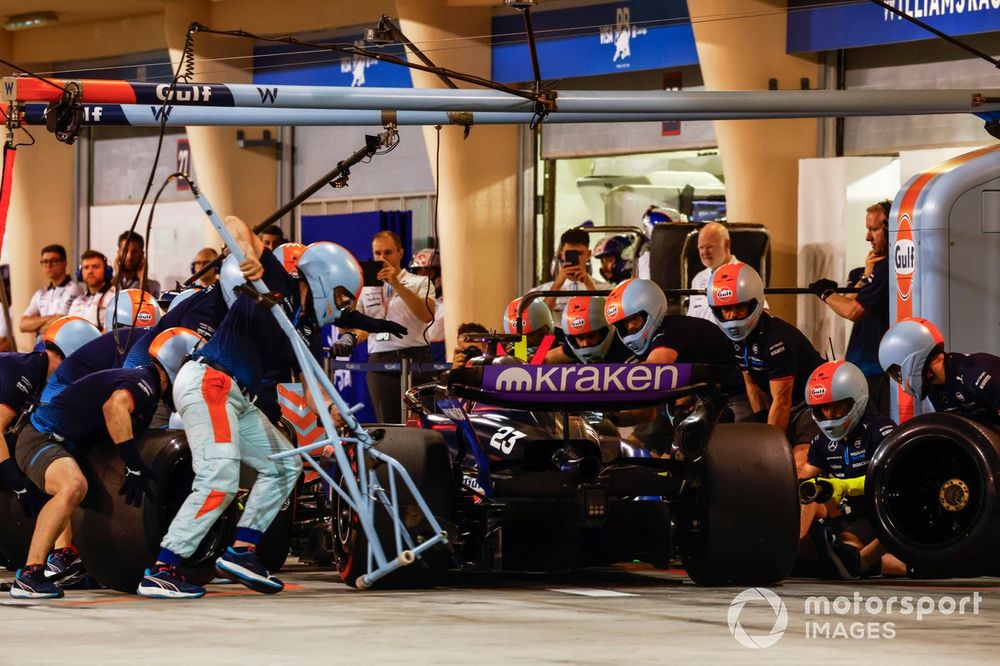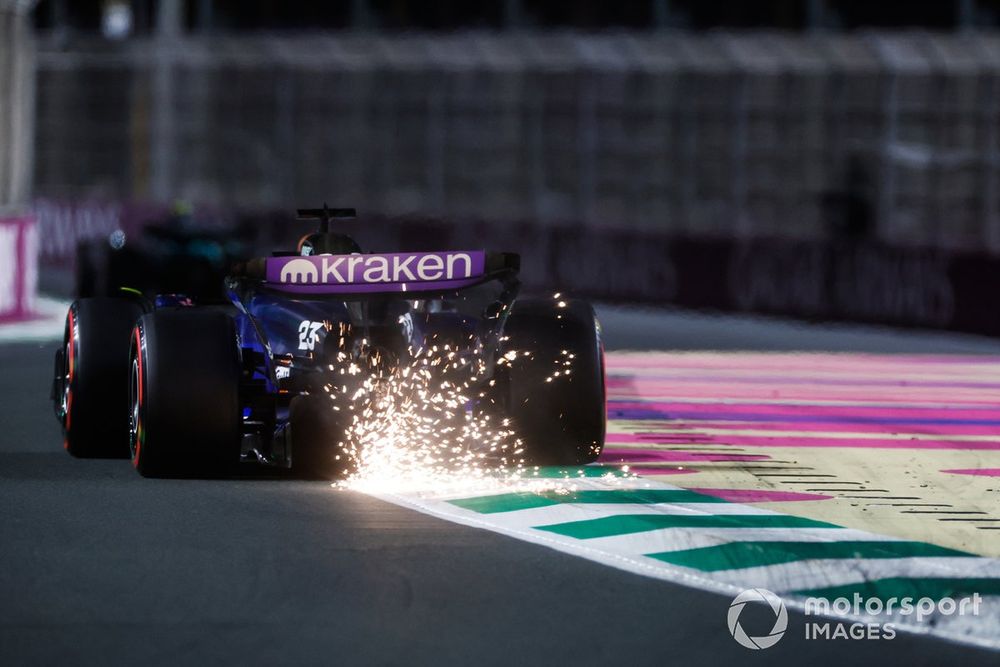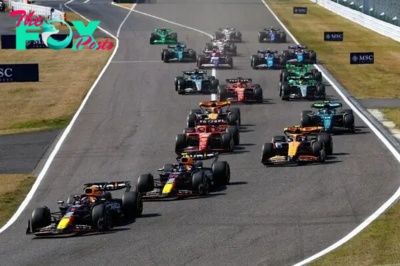F1 News
How Vowles is changing the culture at the Williams F1 team
That’s the challenge that Williams team principal James Vowles and chief technical officer Pat Fry have taken on as they try to get the Grove outfit up to speed, on and off the track.
The team made decent progress last season during Vowles’s first year in the job, securing seventh place in the world constructors’ championship.
The FW45 was already built when he arrived, so this year’s car is the first designed and put together on his watch, meanwhile Fry only started work in November so had limited input, so his initial focus was on finding out how the place operated and what areas needed to be improved.
For Vowles the past winter was a learning exercise, and like Fry has previously detailed, he was alarmed at how late FW46 came together.
“The chassis was a bag of bits in January,” Vowles said. “You can't operate that way, it's a level of stress that the organisation doesn't need. Instead of focusing on performance, we've just been focusing on surviving, and getting the car to the track.
“That's the cultural element of things. We have a car, and I'm proud we have a car, because it was a tremendous effort. It's more throughput in a short period of time than I think every team on the grid, but we've done it ourselves, and it was structured, and process-driven.
“I'm confident we can have something better. None of this is a complaint, it's more that there's a tremendous amount of opportunity in our system to do better, and we have to, it's our responsibility to make sure that this is the last winter and build that we go through like this. It cannot be that way again.”
Vowles had a first hint of problems ahead during 2023 when he watched updates on the FW45 coming through the system as they took longer to reach the track than he would have liked.

James Vowles, Team Principal, Williams Racing
Photo by: Mark Sutton / Motorsport Images
"Last year, when I came into the team, it was already 20 February, the car was already a physical entity,” he recalls. “What I was able to see was more the updates in the year, which is very lightweight compared to a build.
“A build is 20,000 bits coming together within two weeks. An update is occasionally a large update, but it's a floor, front wing, rear wing, whatever it may be, and it's more controlled. There were absolute signs of problems there, but not to the extent of the winter."
Vowles knew when he moved across from his previous role at Mercedes that Williams did not have the infrastructure of the title-winning team that he’d just left. But what he found was in a worse state than he has anticipated, largely a result of an enforced lack of investment prior to the takeover by current owners Dorilton. Making up for those lean years is not the work of a moment.
“I knew on day two, really, when I walked through the door, how difficult this was going to be,” he said. “Because it doesn't take long walking around Williams before you realise there's very little compared to what I was used to. I don't just mean in terms of facilities and buildings, but also processing data.
“There wasn't even data on how much a component cost, or on how long it took to make the components. Or how many components were in the system to be built.
“Once you're missing that raw level of data, it's very easy to understand how you don't understand with 20,000 bits where they are in the company, or how they're going to come together, or how long they will take for them built and developed.
“What I didn't know, though, is how we make up for that. And unfortunately, it's through humans pushing themselves to the absolute limit and breaking. That's why we can never go through this ever again.”
Vowles makes a key point here. He’s not highlighting any lack of effort on the part of the staff, but rather the opposite. The people have been tied down by systems and methodologies that haven’t moved with the times, and have had to work even harder to compensate.

Alex Albon, Williams FW46
Photo by: Zak Mauger / Motorsport Images
“We don't have a lazy organisation,” he explained. “Far from it. We have an organisation in fact that we're willing to sleep on the floor in order to get the job done, which doesn't exist up and down the pitlane – but it doesn't need to exist up and down the pitlane.
“We have an organisation where there are a number of individuals that have a very good idea in their head, what's required on the car, but it's not prograMMAtic. It's not systematic. We don't have a process behind that.
“So as the car was being built in the factory, one of my largest concerns was, what have we missed? Because I can't see physically any construct that allows me to have confidence that we have everything here.”
Vowles makes an interesting observation about how previously the team relied on “contingencies” – for example making some pieces out of metal rather than going through the lengthier composite process, or repurposing parts from the previous year’s car.
He said for the FW46 he put a stop to that: “I wanted to stress the system to the absolute limit to understand where it's breaking, and how it's breaking – once. It's the only winter we're going to do it.”
Introducing new systems is one thing, but ensuring that people accept changes to the way they do things is a lot harder.
It’s often been said that Williams has a high percentage of long-time employees who hark back to an earlier era and have struggled to accept direction from anyone who wasn’t Frank Williams or Patrick Head, which perhaps explains the revolving door of technical leaders in recent times. Vowles stresses that was already changing even before his arrival.
“I haven't actually had anyone come see me and say, 'I'm not doing this, this is wrong. This is where we are',” he said. “The way of perhaps Williams working in the old ways there was, certainly before I've joined, I'm sure, a lot of, 'This is how we've done it, so this is how we are doing it'.

Sparks fly from Alex Albon, Williams FW46
Photo by: Steven Tee / Motorsport Images
“I think a lot of that, to the credit of my predecessors, has been moved away. There's still a little bit of it, but there's only a little bit of it. It's more now that you're pushing people into an area that is completely uncomfortable, completely different to what they've known previously.”
The good news is that he has quickly proved to be an inspirational leader, and he seems to have won over the staff. That, in turn, will allow him to drive change in the way the company operates and make life better for all concerned.
“Cultural change, change like this, doesn't happen in one hour, one day or even a winter,” he added. “It happens typically for a thousand people in about three years. Pat and I think the same way, which is, 'This is really straightforward, this will make your lives better, and it's process-driven'.
“For others it now feels more like we've put them in a box where, 'This is all you can do. And this is your narrow field of view'. And that's not the case whatsoever at all. In fact, it's more, 'I want you now thinking differently, I've prevented you from spending hours of your life doing something that's meaningless, and would rather giving you back half your life to start thinking cleverly about how we're going to move forward'.
“That journey is one of discomfort for many people. So it’s not resistance in any way that is an obvious fight against it. But it's just the normal resistance you encounter when you're trying to change your culture.”
-

 F1 News20h ago
F1 News20h agoF1 teams downplay risks of ‘sprint cars’ with new parc ferme rules
-

 F1 News1d ago
F1 News1d agoRB plans Miami upgrade to keep "surfing on the top" of midfield fight
-

 F1 News1d ago
F1 News1d agoNorris: F1 might never have a driver with Alonso's longevity again
-

 F1 News1d ago
F1 News1d agoThe changes that resulted from F1’s evolution into a truly global player
-

 F1 News1d ago
F1 News1d agoRed Bull being as "ballsy" with F1 engine as it is with title-winning cars
-

 F1 News1d ago
F1 News1d agoHow studying Tost, Whiting and Binotto shaped F1's latest team boss
-

 F1 News2d ago
F1 News2d agoF1 chief Domenicali eyes more sprint weekends
-

 F1 News2d ago
F1 News2d ago12 years late: How Hulkenberg is finally getting his shot at a ‘big’ F1 team





















